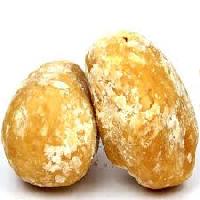Sugarcane Product: A Pure Sweetener for Health-Conscious Individuals
Sugarcane Product: A Pure Sweetener for Health-Conscious Individuals
Blog Article
The Trip of Sugarcane: From Harvest to Everyday Products
The journey of sugarcane is a multifaceted procedure that begins with thorough cultivation and culminates in a variety of items that penetrate our day-to-day lives. As we check out the different elements of sugarcane's trip, its function in sustainability and the more comprehensive ramifications for our setting come into sharper emphasis.
Growing of Sugarcane
The growing of sugarcane is an important agricultural procedure that requires particular environmental problems and management practices. Optimum development occurs in exotic and subtropical regions where temperatures range between 20 ° C and 32 ° C. Adequate rains or watering is vital, as sugarcane thrives in moist dirt with well-drained conditions (sugarcane product). Soil high quality significantly influences yield; thus, farmers usually perform soil examinations to determine nutrient demands
This approach facilitates effective collecting and maximizes sunlight direct exposure. Plant rotation and intercropping are suggested methods to boost dirt fertility and minimize pest invasions.
Timely application of these plant foods can significantly improve sugar yields. On the whole, successful sugarcane farming pivots on a combination of environmental stewardship, critical planning, and ongoing monitoring methods.
Collecting Methods
Successful sugarcane growing finishes in the harvesting phase, which is critical for maximizing return and guaranteeing high quality. The timing of the harvest is crucial; sugarcane is usually harvested when sucrose levels optimal, generally between 10 to 18 months after planting. This period differs based on climate, dirt type, and sugarcane selection.
Collecting techniques can be generally classified into handbook and mechanical techniques. Manual harvesting is labor-intensive, counting on experienced employees who utilize machetes to cut the stalks close to the ground. This approach permits discerning harvesting, where just the ripest canes are picked, consequently boosting general sugar web content.
Alternatively, mechanical harvesting has actually obtained popularity due to its efficiency and cost-effectiveness. Specialized harvesters outfitted with cutting blades and conveyor systems can refine big areas promptly, considerably reducing labor prices. This method might lead to the incorporation of immature walking sticks and a potential reduction in sugar quality.

No matter of the method utilized, ensuring that harvested walking sticks are delivered rapidly to processing facilities is vital. Prompt handling lessens spoilage and protects the honesty of the sugarcane, establishing the stage for ideal processing.
Processing Techniques
Handling sugarcane involves several critical actions that change the harvested stalks right into useful items, largely sugar and molasses. The first stage is washing the walking stick to remove dirt and debris, adhered to by the extraction of juice through crushing or milling. This procedure usually employs heavy rollers that break the cane fibers to release the pleasant fluid included within.
When the juice is extracted, it goes through explanation, where contaminations such as dirt fragments and bagasse are removed. This is commonly achieved by including lime and warming the juice, permitting sedimentation. The cleared up juice is after that concentrated via dissipation, where water material is lowered, causing a thick syrup.

Eventually, the handling of sugarcane not just produces sugar and molasses however additionally prepares for various derivatives, which will be explored in succeeding discussions.
Products Derived From Sugarcane
Sugarcane is a versatile plant that produces a wide variety of products beyond simply sugar and molasses. Among the main by-products are ethanol and biofuels, which have actually gotten prestige as renewable resource sources. Ethanol, produced via the fermentation of sugarcane juice, works as a different to fossil gas and is web link frequently blended with gasoline to create cleaner-burning gas, decreasing greenhouse gas exhausts.
In addition, sugarcane is a significant resource of bagasse, the coarse residue remaining after juice extraction. Bagasse is utilized in numerous applications, including the manufacturing of paper, biodegradable packaging, and as a biomass fuel for energy generation. Its usage not only decreases waste but additionally improves the sustainability of sugarcane handling.
In addition, sugarcane-derived products encompass the food market, where it offers as an all-natural flavor agent and sweetener in different culinary applications. In the realm of cosmetics, sugarcane extracts are included into skincare products due to their natural exfoliating residential properties.
Ecological Influence and Sustainability
The cultivation and handling of sugarcane have considerable implications for environmental sustainability. This plant needs considerable water resources, typically bring about deficiency of regional water supplies and influencing surrounding ecological communities. In addition, the use of plant foods and chemicals in sugarcane farming can cause soil degradation and river pollution, presenting dangers to biodiversity.

Sustainable sugarcane farming likewise advertises dirt health and wellness through crop turning and decreased husbandry, boosting carbon sequestration. The fostering of these techniques not only supports environmental stability but also enhances the strength of farming neighborhoods against environment modification.
Conclusion
In summary, the journey of sugarcane encompasses different stages from farming to processing, ultimately causing a vast array of items. The significance of sugarcane extends beyond simple sugar, adding to renewable resource via ethanol manufacturing, sustainable packaging via bagasse, and all-natural removes for cosmetics. This multifaceted plant plays a vital role in both dietary enrichment and environmental sustainability, highlighting its value in contemporary farming and industrial practices.
Successful sugarcane growing culminates in the gathering stage, which is critical for making the most of return and ensuring quality. The timing of the harvest is essential; sugarcane is usually collected when sucrose degrees height, normally in between 10 to 18 months after planting.Handling sugarcane involves a number of important actions that transform the harvested stalks into useful products, primarily sugar and molasses.Sugarcane is a functional plant that produces a large range of products past simply sugar and molasses. Furthermore, the use of fertilizers and pesticides in sugarcane farming can result in dirt destruction and river contamination, presenting dangers to biodiversity.
Report this page